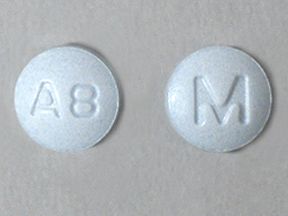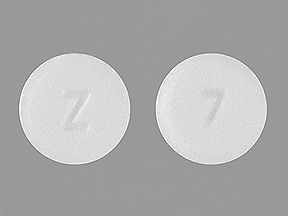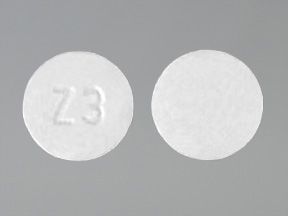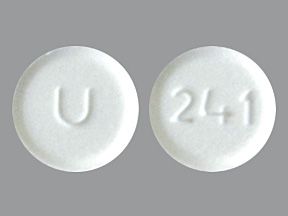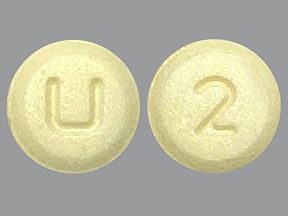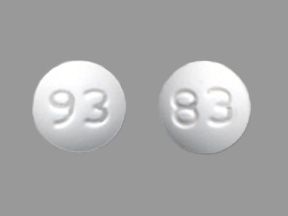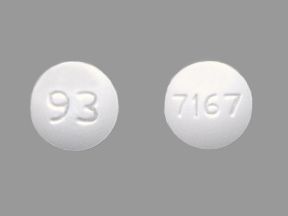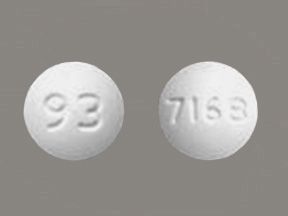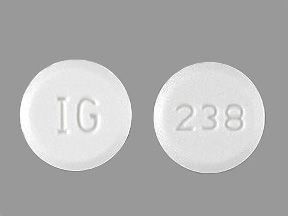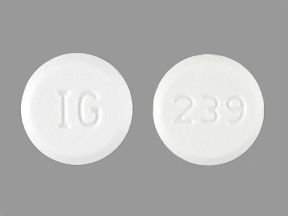- Amlodipine oral tablet is available as a brand-name drug and a generic drug. Brand name: Norvasc.
- Amlodipine comes only as a tablet you take by mouth.
- Amlodipine oral tablet is used to treat high blood pressure, coronary artery disease, and angina.
Amlodipine’s possible side effects are described below.
More common side effects
The more common side effects that can occur with amlodipine include:
- swelling of your legs or ankles
- tiredness
- feeling sleepy
- abdominal pain
- nausea
- dizziness
- hot or warm feeling in your face (flushing)
- very fast heart rate (palpitations)
If these effects are mild, they may go away within a few days or a couple of weeks. If they’re more severe or don’t go away, talk to your doctor or pharmacist.
Serious side effects
Call your doctor right away if you have serious side effects. Call 911 if your symptoms feel life threatening or if you think you’re having a medical emergency. Serious side effects and their symptoms can include the following:
- Low blood pressure. Symptoms can include:
- severe dizziness
- lightheadedness
- fainting
- More chest pain or a heart attack. In rare cases, when you first start taking amlodipine or increase your dosage, your chest pain may get worse or you may have a heart attack. Symptoms can include:
- chest pain or discomfort
- upper body discomfort
- shortness of breath
- breaking out in a cold sweat
- unusual tiredness
- nausea
- lightheadedness
Disclaimer: Our goal is to provide you with the most relevant and current information. However, because drugs affect each person differently, we cannot guarantee that this information includes all possible side effects. This information is not a substitute for medical advice. Always discuss possible side effects with a healthcare professional who knows your medical history.
- Allergic reaction warning: If you’ve had an allergic reaction to amlodipine oral tablet or any of its ingredients, you should not take this drug. Ask your doctor about other medications that might be better options for you.
Amlodipine is a prescription drug. It comes as a tablet you take by mouth.
Amlodipine is available as the brand-name drug Norvasc. It’s also available as a generic drug. Generic drugs usually cost less than the brand-name version. In some cases, they may not be available in every strength or form as the brand-name drug.
Amlodipine may be taken in combination with other heart or blood pressure medications.
Why it’s used
Amlodipine is used to lower your blood pressure.
Amlodipine is also used to help blood flow more easily to your heart when the arteries in your heart are blocked.
Amlodipine is also used to treat coronary artery disease and angina (chest pain).
This drug can be used alone or in combination with other heart or blood pressure medications.
How it works
Amlodipine belongs to a class of drugs called calcium channel blockers. A class of drugs is a group of medications that work in a similar way. These drugs are often used to treat similar conditions.
Amlodipine blocks calcium from entering certain tissues and arteries. This makes it easier for them to relax so that blood can flow more easily to your heart. This in turn helps lower your blood pressure, and reduces your risk of heart attack or stroke. If you’re taking amlodipine for chest pain, this drug reduces your risk of hospitalization and surgeries due to chest pain.
How long it lasts
Amlodipine starts working right away after you take your first dose. It may take several days for the drug to reach its full effects for lowering your blood pressure or reducing your chest pain. With regular daily use, amlodipine’s effects typically last for about 24 hours.
The effects of amlodipine should last as long as you continue taking it as prescribed. If your doctor recommends stopping amlodipine, the drug will typically stay in your system for around 10 days after your last dose. It’s possible to continue experiencing effects of amlodipine after you stop taking the drug, especially during this 10-day period.
If you have questions about how long you’ll continue taking amlodipine or how long its effects last, talk with your doctor.
As with all medications, the cost of amlodipine can vary. The actual price you’ll pay depends on your insurance plan, your location, and the pharmacy you use.
Keep in mind that you may be able to get a 90-day supply of amlodipine oral tablets. If approved by your insurance company, getting a 90-day supply of the drug could reduce your number of trips to the pharmacy and help lower the cost. If you’re interested in this option, check with your doctor, pharmacist, or insurance company.
Financial and insurance assistance
Financial assistance to help you pay for amlodipine may be available.
Medicine Assistance Tool and NeedyMeds are two websites offering resources that may help decrease the price you pay for amlodipine. They also offer tools to help you find low cost healthcare, as well as educational resources. To learn more, visit their sites.
You can also refer to the coupons on this page for possible ways to save on amlodipine oral tablets.
To learn more about saving money on prescriptions, check out this article.
Mail-order pharmacies
Amlodipine may be available through a mail-order pharmacy. Using this service may help lower the drug’s cost and allow you to get your medication without leaving home.
If recommended by your doctor, you may be able to receive a 90-day supply of amlodipine, so there’s less concern about running out of the medication. If you’re interested in this option, check with your doctor, pharmacist, or insurance company. Some Medicare plans may help cover the cost of mail-order medications.
If you don’t have insurance, you can ask your doctor or pharmacist about online pharmacy options.
All possible dosages and forms may not be included here. Your dose, form, and how often you take it will depend on:
- your age
- the condition being treated
- how severe your condition is
- other medical conditions you have
- other medications you take
- how you react to the first dose
Drug forms and strengths
Generic: amlodipine
- Form: oral tablet
- Strengths: 2.5 milligrams (mg), 5 mg, 10 mg
Brand: Norvasc
- Form: oral tablet
- Strengths: 2.5 mg, 5 mg, 10 mg
Dosage for high blood pressure (hypertension)
Adult dosage (ages 18 to 64 years)
- Typical starting dosage: 2.5 mg to 5 mg taken once per day.
- Dosage increases: Your doctor may change your dosage based on your blood pressure goals. If your blood pressure is still not managed after 7 to 14 days of treatment, your doctor may increase your dosage.
- Maximum dosage: 10 mg per day.
Child dosage (ages 6 to 17 years)
- Typical dosage: 2.5 mg to 5 mg taken by mouth once per day. Doses above 5 mg have not been studied in children and are not usually prescribed.
Child dosage (ages 0 to 5 years)
This drug is not usually prescribed for use in children younger than 6 years.
Senior dosage (ages 65 years and older)
- Typical dosage: 2.5 mg taken by mouth once per day.
- Note: Older adults may process drugs more slowly. A typical adult dosage may cause levels of amlodipine in your body to be higher than recommended. If you’re an older adult, you may need a lower dosage.
Dosage for coronary artery disease and angina
Adult dosage (ages 18 to 64 years)
- Typical starting dosage: 5 mg taken once per day.
- Maximum dosage: 10 mg per day.
Child dosage (ages 0 to 17 years)
A child’s dosage is not available for this use.
Senior dosage (ages 65 years and older)
- Typical dosage: 5 mg taken by mouth once per day.
- Note: Older adults may process drugs more slowly. A typical adult dosage may cause levels of amlodipine in your body to be higher than recommended. If you’re an older adult, you may need a lower dosage.
Special dosage considerations
For people with liver disease: The recommended dosage is 2.5 mg taken once per day. Amlodipine is processed by your liver. If your liver isn’t working well, more of this drug may stay in your body longer. This puts you at risk of side effects. If you have severe liver problems, you may need a lower dosage.
Disclaimer: Our goal is to provide you with the most relevant and current information. However, because drugs affect each person differently, we cannot guarantee that this list includes all possible dosages. This information is not a substitute for medical advice. Always speak with your doctor or pharmacist about dosages that are right for you.
You might wonder how amlodipine compares with losartan (Cozaar). These medications are used for many of the same conditions. You can refer to this article to learn how these drugs compare. Also, be sure to talk with your doctor about which drug is right for you.
Amlodipine oral tablet can interact with other medications, vitamins, or herbs you may be taking. An interaction is when a substance changes the way a drug works. This can be harmful or prevent the drug from working well.
To help avoid interactions, tell your doctor about all medications, vitamins, or herbs you’re taking. To find out how this drug might interact with something else you’re taking, talk with your doctor or pharmacist.
Examples of drugs that can cause interactions with amlodipine are listed below.
Heart medication
Taking diltiazem with amlodipine can increase the level of amlodipine in your body. This may cause more side effects.
Antifungal medications
Taking amlodipine with these drugs can increase the level of amlodipine in your body. This may cause more side effects. Examples of these drugs include:
- ketoconazole
- itraconazole
- voriconazole
Antibiotic
Taking clarithromycin with amlodipine can increase the level of amlodipine in your body. This may cause more side effects.
Medications for erection problems
Taking amlodipine with these drugs can increase your risk of low blood pressure (hypotension).
Examples of these drugs include:
- sildenafil (Viagra)
- tadalafil (Cialis)
- avanafil
- vardenafil (Levitra)
Cholesterol medication
Taking amlodipine with simvastatin can cause the levels of simvastatin to increase in your body. (Simvastatin is a cholesterol medication.) This may increase the risk of simvastatin’s side effects.
Drugs that control your immune system
Taking amlodipine with these drugs can cause the levels of these medications to increase in your body. This may lead to more side effects. Examples of these drugs include:
- cyclosporine (Gengraf, Neoral, Sandimmune)
- tacrolimus
Disclaimer: Our goal is to provide you with the most relevant and current information. However, because drugs interact differently in each person, we cannot guarantee that this information includes all possible interactions. This information is not a substitute for medical advice. Always speak with your healthcare professional about possible interactions with all prescription drugs, vitamins, herbs and supplements, and over-the-counter drugs that you are taking.
This drug comes with several warnings.
Allergy warning
Amlodipine can cause a severe allergic reaction. Symptoms include:
- trouble breathing
- swelling of your throat or tongue
- hives
If you develop these symptoms, call 911 or go to the nearest emergency room.
Do not take this drug again if you’ve ever had an allergic reaction to it. Taking it again could be fatal (cause death).
Warnings for people with certain health conditions
For people with liver problems: Amlodipine is processed by your liver. If your liver isn’t working well, more of this drug may stay in your body longer. This puts you at risk for more side effects. If you have severe liver problems, your doctor may lower your dosage.
For people with severe aortic stenosis: With severe aortic stenosis, the opening of one of your heart valves becomes very narrow, which limits blood flow to your body. If you have this condition, taking amlodipine may lead to low blood pressure. Your doctor may prescribe a low dosage of amlodipine and monitor you closely during treatment. Or they may recommend a different treatment option.
For people with severe obstructive coronary artery disease: With severe obstructive coronary artery disease, your arteries become very narrow. This limits blood flow and increases your risk of serious problems, such as a heart attack or worsening angina (chest pain). In rare cases, taking amlodipine can further increase this risk, especially when you first start taking it or your dosage is increased. If you have this condition, your doctor may prescribe a low dosage of amlodipine and monitor you closely during your treatment. Or they may recommend a different treatment option.
Warnings for other groups
For pregnant people: Research in animals has shown negative effects to the fetus when the pregnant animals were given amlodipine. However, there haven’t been enough studies done in humans to be certain how the drug might affect a human pregnancy.
Tell your doctor if you’re pregnant or planning to become pregnant. Amlodipine should be used during pregnancy only if the potential benefit justifies the potential risk.
For people who are breastfeeding: Some research has shown that amlodipine passes into breast milk. However, it’s not known if amlodipine can cause side effects in a child who is breastfed. Talk with your doctor if you breastfeed your child. You may need to decide whether to stop breastfeeding or stop taking this medication.
For older adults (seniors): As you age, your body may not process this drug as well as it once could. More of this drug may stay in your body longer. This puts you at risk for more side effects.
For children: This drug usually isn’t prescribed for use in children younger than 6 years.
Amlodipine oral tablet is used for long-term treatment. It comes with serious risks if you don’t take it as prescribed.
If you don’t take it at all or stop taking it: If you don’t take amlodipine or stop taking it, your blood pressure or chest pain may get worse. This could lead to serious problems, such as a stroke or heart attack.
If you skip or miss doses: If you skip or miss doses, your blood pressure or chest pain may get worse. This could lead to serious problems, such as a stroke or heart attack.
What to do if you miss a dose: If you miss a dose, take it as soon as you remember. If it’s been more than 12 hours since you missed your dose, skip that dose and take the next dose at your regular time.
If you take too much: If you take too much amlodipine, you may experience dangerously low blood pressure. Symptoms can include:
- dizziness
- lightheadedness
- fainting
- very fast heart rate
If you think you’ve taken too much of this drug, call your doctor or seek guidance from America’s Poison Centers at 800-222-1222 or through their online tool. But if your symptoms are severe, call 911 or go to the nearest emergency room right away.
There is no antidote for this medication. If you take too much, you’ll be treated for whatever side effects you have.
How to tell if the drug is working: How to tell if amlodipine is working depends on the condition being treated. For high blood pressure, the drug should lower your blood pressure on tests. For angina or coronary artery disease, the drug should help prevent your symptoms (such as chest pain).
Keep these considerations in mind if your doctor prescribes amlodipine for you.
General
- Take amlodipine at the same time every day.
- You can cut or crush the tablet.
Storage
This drug must be stored at the right temperature:
- Store amlodipine at room temperature between 59°F and 86°F (15°C and 30°C).
- Store this drug in its original container and keep it tightly closed.
- Keep this drug away from light.
- Don’t store this medication in moist or damp areas, such as bathrooms.
Refills
A prescription for this medication is refillable. You should not need a new prescription for this medication to be refilled. Your doctor will write the number of refills authorized on your prescription.
Travel
When traveling with your medication:
- Always carry your medication with you. When flying, never put it into a checked bag. Keep it in your carry-on bag.
- Don’t worry about airport X-ray machines. They can’t harm your medication.
- You may need to show airport staff the pharmacy label for your medication. Always carry the original prescription-labeled container with you.
- Don’t put this medication in your car’s glove compartment or leave it in the car. Be sure to avoid doing this when the weather is very hot or very cold.
Self-management
You may need to check your blood pressure at home.
You should keep a log with the date, time of day, and your blood pressure readings. Bring this diary with you to your doctor’s appointments.
Your doctor may ask you to purchase a blood pressure monitor to check your blood pressure between office visits.
Clinical monitoring
Before starting and during your treatment with this drug, your doctor may check your:
- blood pressure
- liver function
These tests will help your doctor decide if amlodipine is safe for you to start and if you need a lower dosage.
Availability
Amlodipine should usually be in stock at any pharmacy. It’s not considered a specialty drug.
Hidden costs
You may need to purchase a home blood pressure monitor to keep track of your blood pressure. These are available at most pharmacies and online.
There are other drugs available to treat your condition. Some may be better suited for you than others. Talk with your doctor about other drug options that may work for you.
Disclaimer: Medical News Today has made every effort to make certain that all information is factually correct, comprehensive, and up to date. However, this article should not be used as a substitute for the knowledge and expertise of a licensed healthcare professional. You should always consult your doctor or another healthcare professional before taking any medication. The drug information contained herein is subject to change and is not intended to cover all possible uses, directions, precautions, warnings, drug interactions, allergic reactions, or adverse effects. The absence of warnings or other information for a given drug does not indicate that the drug or drug combination is safe, effective, or appropriate for all patients or all specific uses.
